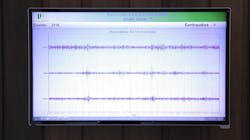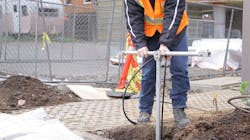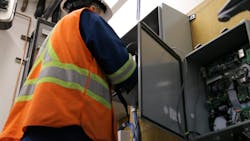First building-specific earthquake warning system installed in North Portland, Ore.
CoreFirst LLC, a producer of seismic retrofit systems for commercial and institutional buildings, has partnered with Vancouver, B.C.-based Weir-Jones Engineering Consultants to commercialize Weir-Jones’ ShakeAlarm earthquake early warning system (EEWS) in the U.S.
The first U.S. installation of ShakeAlarm was recently completed at the Radiator Building, a 36,000-sf, five-story, wood-framed office building located in a densely populated neighborhood in North Portland, Ore.
“It’s no secret that the Pacific Northwest is due for a large-scale seismic event,” said CoreFirst Principal Paul Conway. “What we haven’t had in place, until now, is an affordable system for building occupants that can provide critical advance warning and direct them to safety to minimize loss of life.”
The ShakeAlarm system recognizes and quantifies the faster but lower-energy seismic P-wave, which is the precursor to the more damaging S-wave. When used in conjunction with industrial or civil infrastructure control systems, these crucial seconds of warning can be leveraged to minimize runaway failure modes in critical structures, and shut down gas and electricity feeds to infrastructure, thereby minimizing fire risk to assets after a seismic event.
After detecting a P-wave, the ShakeAlarm system will:
• Immediately send a warning text message to the cell phone of every radiator occupant (regardless of whether he or she is in the building)
• Automatically shut down gas and electricity
• Automatically return elevators to ground level
• Open any metered doors
• Activate backup power systems


